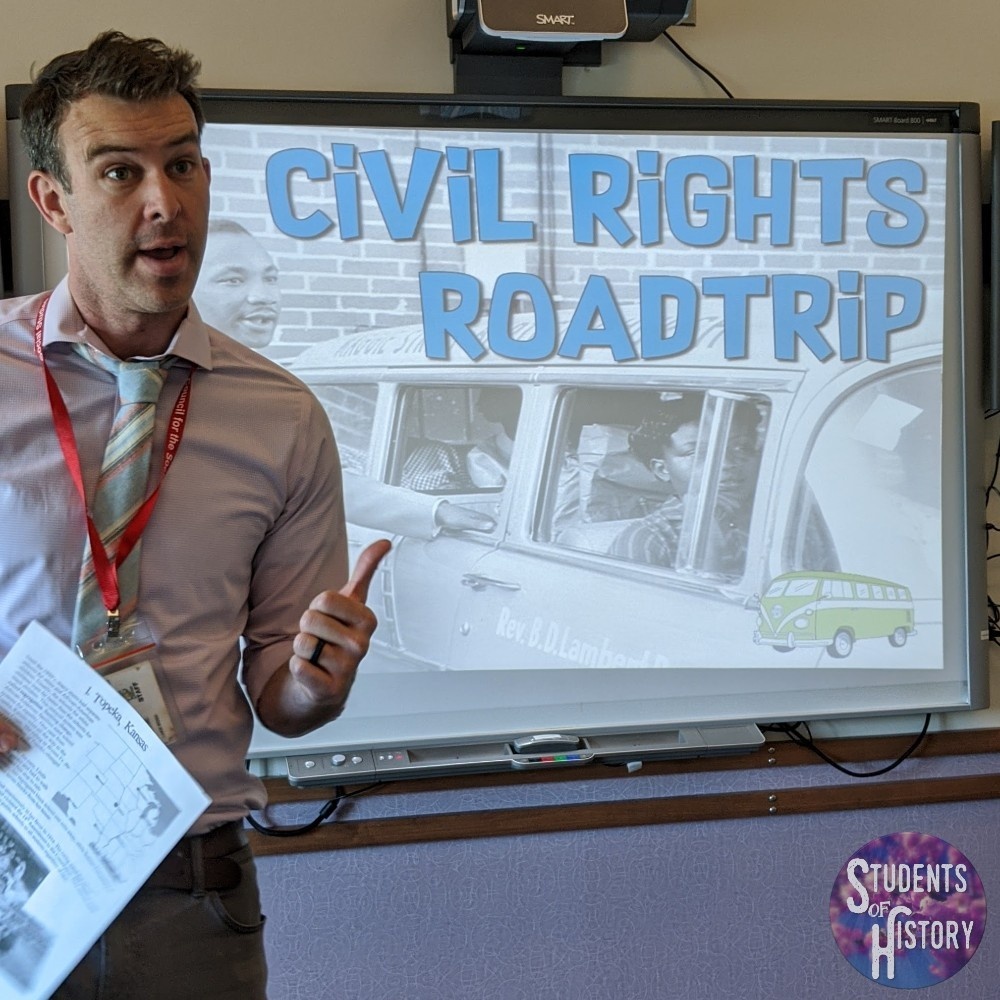The Civil Rights Movement Era
A Complete Unit Plan for US History in Middle School or High School
The 18th unit of my US History curriculum covers the Civil Rights Movement era in America, from its start in the 1950s through how figures like Rosa Parks and Martin Luther King Jr. led collaborative resistance movements that defined the fight for equality.
This is a timeless and essential unit that helps students understand the struggles earlier generations faced in their fight for equal treatment under the law in America. There’s a variety of activities for each day in the unit so that students are always engaged with something new.
You can get every lesson plan and resource for the unit here, or join Students of History to immediately access every lesson online.
The unit begins with a look at Rosa Parks and the early movement. After making connections to earlier units. students use one of several hands-on activities and firsthand sources to get a good look at the early efforts of the civil rights era. Several video clips can be used here as well before students analyze sources on Rosa Parks and complete an interactive Notebook activity or reading activity on Eisenhower and Little Rock Central.
Lesson two delves into the Civil Rights Movement as a whole with a thorough overview PowerPoint and guided notes (with Google Slides and "flipped classroom" video) of the entire movement. Following this there are several video clips to help students better connect with key leaders before they dive into primary sources like President Kennedy's address, the famous Bigger than a Hamburger speech, or Martin Luther King's speech at the March on Washington.

Next up is a super engaging civil rights road trip lesson in which students move through stations to learn more about key moments in the Civil Rights Movement and improve their geography skills. Several primary sources are also available here, including an actual Alabama literacy test that makes for a great warm up to start the lesson.
In the next lesson, students work on an interactive timeline of key events from this period. Following this, students can learn more about other events connected to the movement, including the Loving v. Virginia case or Selma March to expand their understanding of all the aspects of the fight for equality.
Students engage in serious critical thinking in the next lesson as they Analyzing Resistance and Civil Rights. This thorough lesson plan has students place themselves at key moments of the movement and think about how they would react and the effect that might have on them and their families.
The next lesson moves beyond the traditional topics to look at redlining and housing discrimination and the impact this has had on communities of color. Students analyze maps and primary sources from across decades before getting the chance to analyze their own community's history.
For addressing the rights of American Native Indians, the next lesson reviews the Occupation of Alcatraz by the Indians of All Tribes. The lesson plan includes documents for students to analyze along with a documentary and more.

Cesar Chavez and the push for better rights for migrant workers are covered in the next lesson. A video and worksheet are included for the main part of the lesson before students review a Cesar Chavez speech or work on a page in the digital notebook.
The unit concludes with a lesson on the Stonewall uprising and the push towards LGBTQ rights. There are primary sources, articles, and documents in the lesson plan that chronicle the causes and effects of the stonewall uprising as well as the fight towards equal rights for the LGBTQ community.
A printable PDF or Google Doc unit packet and digital notebook set can be used throughout the unit for remediation or extension activities.
The unit concludes with several review games followed by an editable test, with a Google Forms version also available for easy grading.
You can use the links above to download any resource individually and see reviews from teachers who've used them. The entire unit can be downloaded here and immediately saved to your desktop. You can also access the lessons and resources through a subscription, which grants you access to the ENTIRE US History curriculum.
If you’re unsure which option might be best, you can read about the differences between subscriptions and TpT here.





